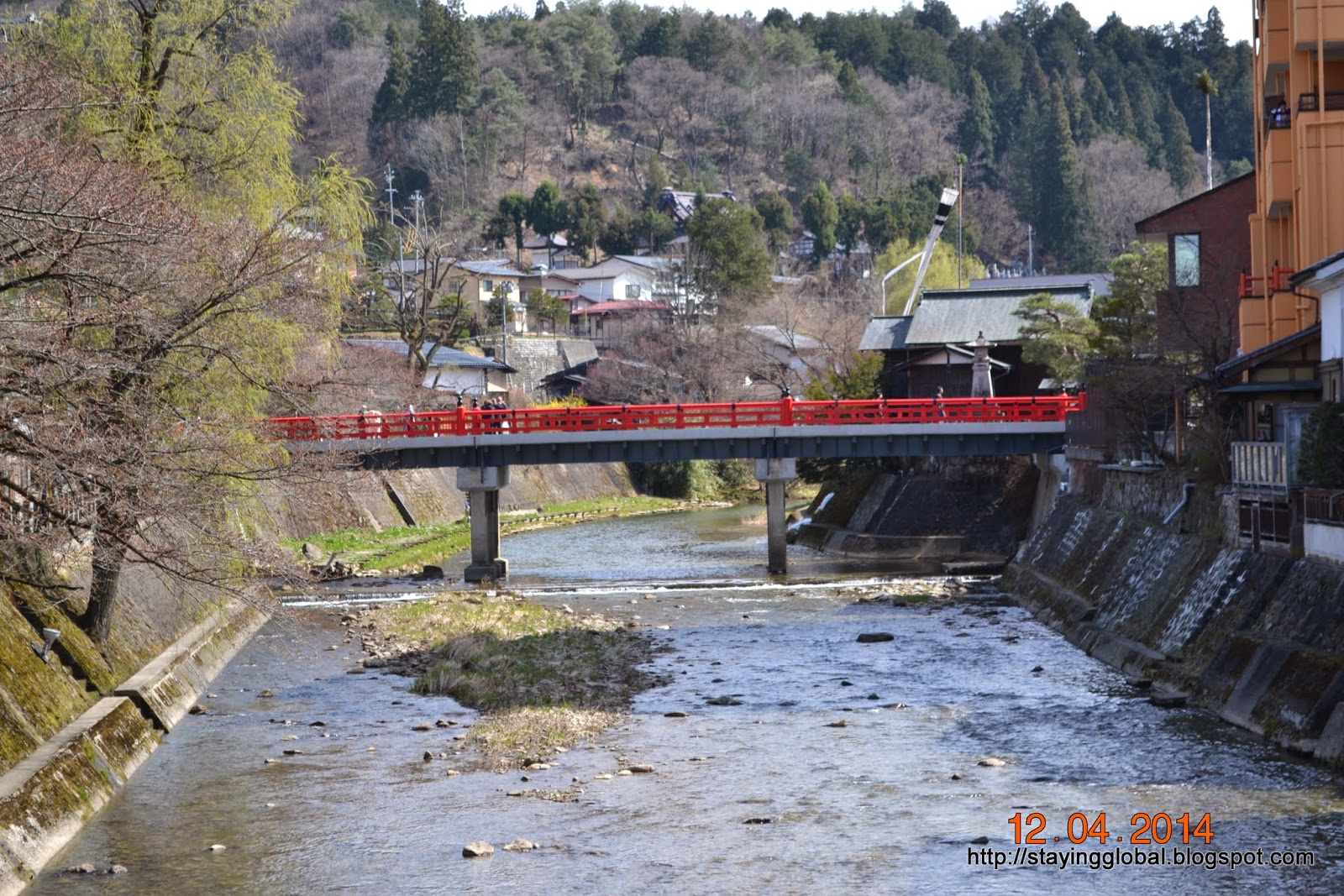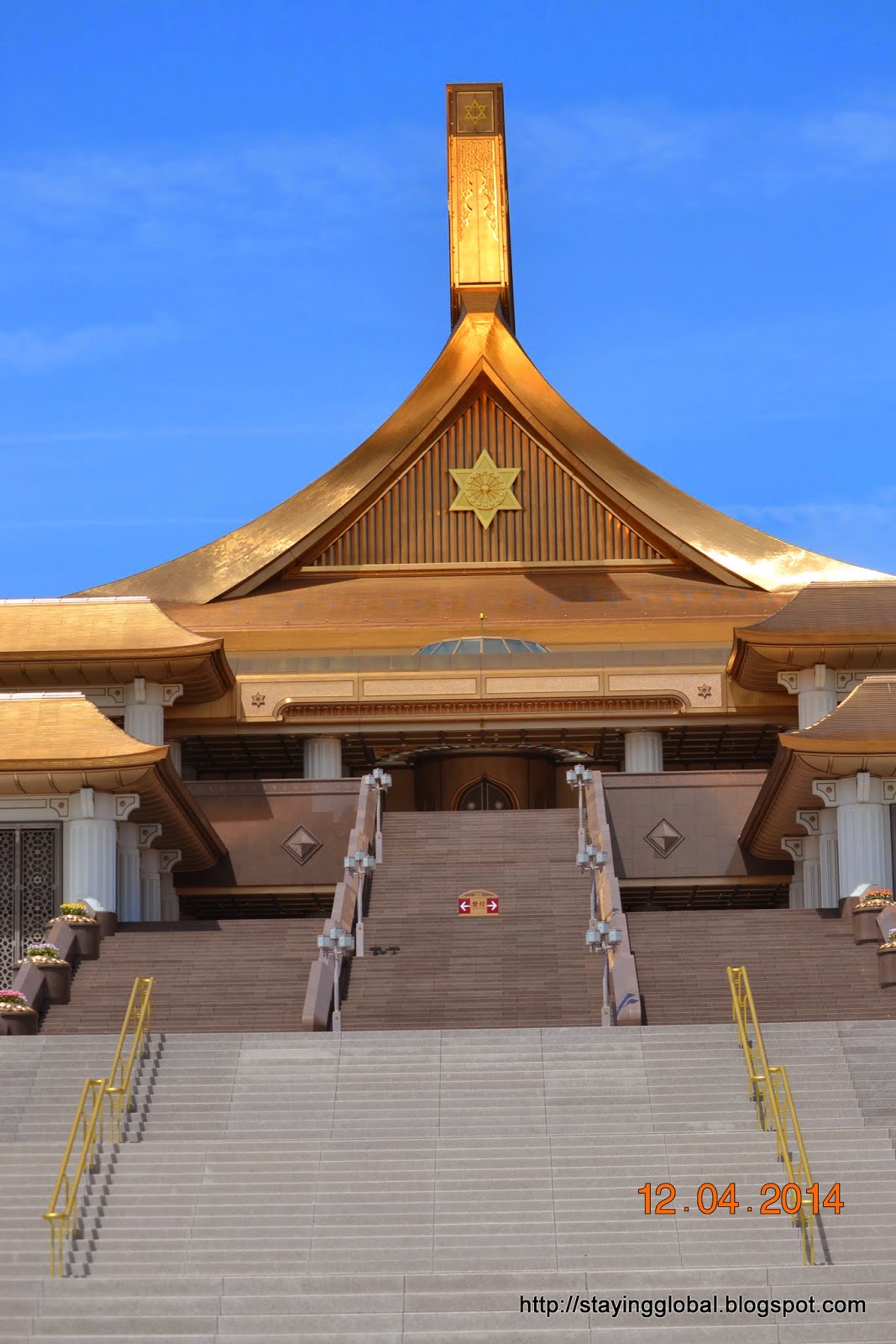We had been planning to visit Hida Takayama for quite some time. We finally made the trip a few weeks back.
Takayama is a city in the mountainous region of Gifu Prefecture. Since there are quite a few places known as Takayama in Japan, this particular city is referred to as Hida Takayama to distinguish it from others.From the feudal age, Takayama had been a centre of woodwork and famous for its high quality timber and high skilled carpenters
The Higashiyama Temple Walk is a 3.5 km long walking trail from Takayama's temple town,Tera Machi to the Shiroyama Park, the site of the erstwhile Takayama Castle.
We skipped the temple trail as we were told that most temples are similar to most Japanese Buddhist temples. We did visit the Shiroyama Park for a short time and even walked a part of the trail from the Shiroyama park end.
Having visited quite a few well preserved towns like Magomejuku and Ouchijuku, we were not so impressed with Takayama. After all the praise that we had heard, we felt it was a bit overrated. We felt that Shirakawa-go, the other famous place in Gifu Prefecture and less than an hour's drive from Takayama, was nicer from a tourist's point of view. The Hida Folk Village in Takayama also houses a few Gassho zukuri houses, similar to those in Shirakawa-go village. Having visited Shirakawa-go a few months earlier, we decided to skip the Hida Folk Village.
Takayama Matsuri or Takayama Festival, held in spring and autumn is one of Japan's three famous festivals and attracts a large number of visitors. The Spring festival is held in the Hie Shrine while the Autumn festival is held in the Hachiman Shrine. Both the spring and autumn festivals feature tall and decorated floats called Yatai and some of these even feature Karakuri Ningyo, mechanical dolls on top. These festive floats are stored in storehouses which one can see while walking through the old town.
Takayama is also known for its two morning markets held everyday - one in front of the Takayama Jinya and the other near the Miyagawa river.
Local products and crafts are sold here and this is one of Takayama's famous attractions.
However, what impressed us the most in Takayama, was the Suza-Main World Shrine, the headquarters of a religious cult, the Sukyo Mahikari.
In a country which has a large number of temples and shrines, the Sukyo Mahikari shrine was a totally different experience.
The building's architecture is a blend of various other religious motifs and styles. We could see Star of David, Buddhist symbols, Islamic style towers and off course Japanese architecture.
The hall, or the main shrine is impressive and visitors can experience a feeling of peace. The hall is enormous and can seat 4500 people. A large golden shrine with a large fish tank under it faces the seating area. Enormous ornately designed glass structures in the roof allow passage of natural light. In the hall too, motifs of various religions can be seen. The shrine is definitely a must see. While photography is allowed outside and around the shrine, photography is prohibited inside the prayer hall. Visitors are handed out pamphlets in Japanese or English which provide information and pictures about the Mahikari and the Main shrine.
The Main Shrine is referred to as The Noah's Ark of the 21st century by the Mahikari.
With the Shrine's Golden Roof dominating the Takayama sky, this shrine is difficult to miss.
Address: Gifu Prefecture 506-0055, Takayama, Kamioka Motomachi 2-596-1
Phone: 0577-34-7008
Takayama is a city in the mountainous region of Gifu Prefecture. Since there are quite a few places known as Takayama in Japan, this particular city is referred to as Hida Takayama to distinguish it from others.From the feudal age, Takayama had been a centre of woodwork and famous for its high quality timber and high skilled carpenters
Most of Takayama's tourist attractions are located in its old town. The city had flourished as a merchant's town in the Edo period and buildings from that era have been nicely preserved.
A few buildings are still used as homes while the most have been converted into stores, sake breweries or museums.
The city attracts large number of tourists- both Japanese and foreign tourists.
The city attracts large number of tourists- both Japanese and foreign tourists.
The Higashiyama Temple Walk is a 3.5 km long walking trail from Takayama's temple town,Tera Machi to the Shiroyama Park, the site of the erstwhile Takayama Castle.
We skipped the temple trail as we were told that most temples are similar to most Japanese Buddhist temples. We did visit the Shiroyama Park for a short time and even walked a part of the trail from the Shiroyama park end.
Having visited quite a few well preserved towns like Magomejuku and Ouchijuku, we were not so impressed with Takayama. After all the praise that we had heard, we felt it was a bit overrated. We felt that Shirakawa-go, the other famous place in Gifu Prefecture and less than an hour's drive from Takayama, was nicer from a tourist's point of view. The Hida Folk Village in Takayama also houses a few Gassho zukuri houses, similar to those in Shirakawa-go village. Having visited Shirakawa-go a few months earlier, we decided to skip the Hida Folk Village.
Takayama Matsuri or Takayama Festival, held in spring and autumn is one of Japan's three famous festivals and attracts a large number of visitors. The Spring festival is held in the Hie Shrine while the Autumn festival is held in the Hachiman Shrine. Both the spring and autumn festivals feature tall and decorated floats called Yatai and some of these even feature Karakuri Ningyo, mechanical dolls on top. These festive floats are stored in storehouses which one can see while walking through the old town.
Takayama is also known for its two morning markets held everyday - one in front of the Takayama Jinya and the other near the Miyagawa river.
Local products and crafts are sold here and this is one of Takayama's famous attractions.
However, what impressed us the most in Takayama, was the Suza-Main World Shrine, the headquarters of a religious cult, the Sukyo Mahikari.
In a country which has a large number of temples and shrines, the Sukyo Mahikari shrine was a totally different experience.
The building's architecture is a blend of various other religious motifs and styles. We could see Star of David, Buddhist symbols, Islamic style towers and off course Japanese architecture.
The hall, or the main shrine is impressive and visitors can experience a feeling of peace. The hall is enormous and can seat 4500 people. A large golden shrine with a large fish tank under it faces the seating area. Enormous ornately designed glass structures in the roof allow passage of natural light. In the hall too, motifs of various religions can be seen. The shrine is definitely a must see. While photography is allowed outside and around the shrine, photography is prohibited inside the prayer hall. Visitors are handed out pamphlets in Japanese or English which provide information and pictures about the Mahikari and the Main shrine.
The Main Shrine is referred to as The Noah's Ark of the 21st century by the Mahikari.
With the Shrine's Golden Roof dominating the Takayama sky, this shrine is difficult to miss.
Address: Gifu Prefecture 506-0055, Takayama, Kamioka Motomachi 2-596-1
Phone: 0577-34-7008


























































